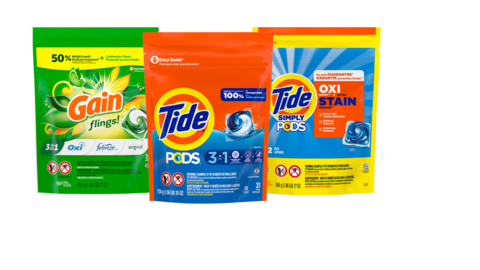- Pediatric Answers
- Posts
- Hidden Dangers: Part 1
Hidden Dangers: Part 1
A while back, I put together a series of Instagram posts I called Hidden Dangers. Some of these are more obvious than others, but all are dangers I’ve unfortunately seen first-hand in my 17+ years of practice.

This week: Get ready to outsmart the playground pundits, with more cash in your wallet and more time for the important things…like building the ultimate couch fort with your kids.
Learn how to save $40 on stitches and avoid some of the hidden dangers I’ve unfortunately seen. Also, a recall alert for a product you likely have in your house right now.
What's Inside

Being a pediatrician changes how you see the world in terms of what is dangerous. A while back, I put together a series of Instagram posts I called Hidden Dangers. Some of these are more obvious than others, but all are dangers I’ve unfortunately seen first-hand in my 17+ years of practice.
So, to start us off here in June, I’m compiling a roundup of all of these posts. Each one has the quick scoop on the associated hidden danger. You’ll see, from the comments, that other parents have experience and concerns with these, too. Part 2 is coming next week. These are all new little gems to keep you as paranoid as me. Store these little nuggets in your parenting knowledge and hopefully we can save you the heart break I’ve unfortunately seen.
Slides
The U.S. Consumer Product Safety Commission estimates 200,000 kids are injured on playgrounds every year. What’s really interesting is the number of kids who are injured while riding down a slide on a parent’s lap. Most commonly, the child’s foot will get caught and the forward momentum of the adult’s weight causes the leg to break.
The NIH says that kids younger than 3 who were injured on slides were “12 times more likely to be…on another’s person’s lap at the time of injury.”
Children identified as being on a lap had an increased odds of injury to the lower extremity than to other body parts (OR 43.0, 95% confidence interval (CI) 32.0–58.0), and of lower leg/ankle fracture than fractures elsewhere
Moral of the story: Don’t ride down a slide with a child on your lap.
Stairs
This one isn’t quite so “hidden,” but because just about every house has stairs, we sometimes don’t take the precautions we should.
Every six minutes, a child falls down stairs somewhere in the U.S., experts say. Research shows some of those accidents happen while the parent is holding the child. Over 90,000 kids under the age of 5 end up in emergency rooms because of stair-related falls every year.
Barstools
I think all of my kids have slipped off a barstool at some point. Scares the life out of me every time.
Beware of tall, wobbly barstools. They may look amazing but they can also be dangerous.
Can't tell you the number of chins and eyebrows we've sewn up at our office from these injuries.
Treadmills
I’ve treated a dozen or so treadmill injuries over the years. They’re not fun. And they’re not just from falling and getting a bonk.
What’s scary is when a kid falls and gets trapped by the belt as it keeps running. It’s like a rugburn on major steroids and may even require skin grafts.
In my Instagram post above, I offer a few suggestions to ensure your kids don’t get injured on treadmills.
Binky Tethers
I totally understand the drama of your kid dropping her binky on the dirty floor while out and about. Binky tethers to the rescue.
But….
“Pacifiers that attach to infant clothing, stuffed toys, or other objects should not be used with sleeping infants.”
Problem is, sometimes parents simply forget to remove binky tethers while their kid is sleeping—in a car seat, or a stroller, or even at home for a nap. Those tethers just aren’t safe. They wrap around fingers, hands, and most tragically, necks.
Shopping Carts
I’ve seen it in my office. Kids brought in who are injured after falling out of a shopping cart or having shopping carts fall on them.
Statistics vary from year-to-year, but somewhere around 24,000 kids are injured related to shopping carts each year.
They’re not buckled in properly. They wiggle out. They stand on the side of the cart and tip it over on themselves. And it can happen in a blink.
Be extra diligent on this one whenever you’re at the store.
Window Blinds
I was at a family dinner party at a friend’s house when we all got up to go into the dining room. As we walked out of the room, their young son climbed onto the back of the sofa and put his head in the window blind’s cord loop.
He slipped and was hanging there when I looked back—almost out of the room. I rushed over and got him loose and everyone was fine.
It was a close one, for sure.
Swimming Pools
This one is pretty obvious. More tips in my Instagram post, so I won’t go into detail here.
For Older Kids
Now, a lot of these hidden dangers are particularly geared toward the littles. But if you have older kids and teens, hidden dangers are also out there.
I did some looking and came across this very interesting graphic and article from the Pew Research Center—I’ve linked to the article below.

That first item on the list: anxiety and depression, is absolutely something I’m seeing in my office. In fact, we’ve seen a huge uptick in the last few years that matches the trend of social media use amongst teens almost perfectly.
I truly believe social media use amongst teens is one of the biggest “hidden” dangers we see today.

Fact Or Fiction: Lap Riders?
Riding down a slide on a parent’s lap is safer for young children

FALSE!
Some parents think riding down a slide with a child on their lap is safer. But, studies from the NIH show that kids younger than 3 are significantly more likely to get injured this way. Injuries often involve the lower extremities, particularly the legs and ankles.

What I’m Seeing at Work: Cracked Heads (not crack heads)

I got texted today this pic of a 3 year old with the attached message: “Do you think it needs stitches? Or butterfly? Shave his hair first? Help!” The message seemed fitting given the hidden dangers topic of this newsletters. Even with the most attentive parenting, kids slip and fall. They hit their heads. My answer was that this needed professional closure. Do not home remedy this one. It got a professional wound cleaning and a couple of staples (the hair did not need shaving). See the money saving hack for being savvy to the bill.


Money-Saving Healthcare Hack: Stitches Savings
Lacerations/cuts are billed based on three factors:
The length of the wound, not the number of stitches placed or the mode (individual stitches vs. a running stitch).
Complexity (e.g., is it so deep that you have to do multiple layers).
Location (i.e., some areas of the body are much more difficult to sew than others).
Pro Tip: Make sure the wound is measured (in centimeters) so you get billed appropriately. The cut offs are <2.5 cm, 2.6 cm-7.5 cm, and >7.5 cm
For example, a 2.4 centimeter cut that requires stitches might cost $155, whereas a 2.6 centimeter cut might cost $195. Knowing the small difference so it isn’t “rounded up” can save you money.
COST SAVINGS: $40
Reminder: You only have 6-8 hours to sew up a wound.

WWID: Cracking in the Corners of the Mouth (angular cheilitis)
I often joke that if it weren’t for my profession, we’d be at the doctor’s office weekly with one of our four kids. I use my skills at home all the time. Here, I’ll share a recent example from home and how I handled it, including the products I used. This isn’t an advertisement—I don’t have any financial interest in these products. I simply have parents ask me all the time about what to do in certain situations and the products I use.
Scenario: My youngest complained that the side of her mouth hurt. When I looked, I saw a little crack or split in the skin at the corner of her mouth.
What I did:
First, my rant. Have you ever noticed how everything goes wrong medically when you go on vacation? We went away for a long weekend and this (amongst a dozen other things) went wrong. I think that the change in diet (it’s hard to eat as healthy on vacation as you eat at home), poor sleep (everyone stays up late and is in unfamiliar beds), extra swimming (the chemical chlorine is hard on the skin), and decreased fluids (dehydration aggravates this condition) made for the perfect set up for this problem. This condition is called angular cheilitis and it is super common.
It can be caused by excess saliva that pools in the corners of the mouth (from thumb sucking, lip licking, teething, or wearing braces), dehydration, poor nutrition, chemical irritation (esp. acne medications), fungal infections, or bacterial infections. Treatment is based on the cause. Fix the underlying problem and you solve your issue. Sometimes, just adding a barrier cream is enough (like Aquaphor). In more severe cases, a steroid cream (to decrease inflammation) or an antifungal or antibiotic ointment may be necessary.
For my daughter, I applied Aquaphor multiple times a day and Mupirocin ointment (a prescription topical antibiotic ointment) 3 times a day. I also doubled down on good nutrition and extra sleep. If it doesn’t clear within a week, I’ll add an antifungal (like Nystatin).

Talk Like A Doctor: Angular Cheilitis

Recalls & Alerts: Laundry Packs

Funny Things: An Apple a Day
I was in the middle of a conversation with a precocious seven year old about his diet. He leaned in and confided that when his mother had told him that he had a check up later that day, he ate an apple. He then leaned away and defiantly declared:
“But it didn’t work! It didn’t keep you a way!”

Legal Disclaimer: The information provided in this article is for educational and informational purposes only. It is not intended as a substitute for professional advice or medical treatment. Always seek the advice of your physician or qualified healthcare provider with any questions you may have regarding a medical condition or the health and welfare of your child. We do not endorse any specific products or brands mentioned in this article. Readers are encouraged to perform their own research and consult with appropriate professionals before making any decisions based on the information provided herein.











